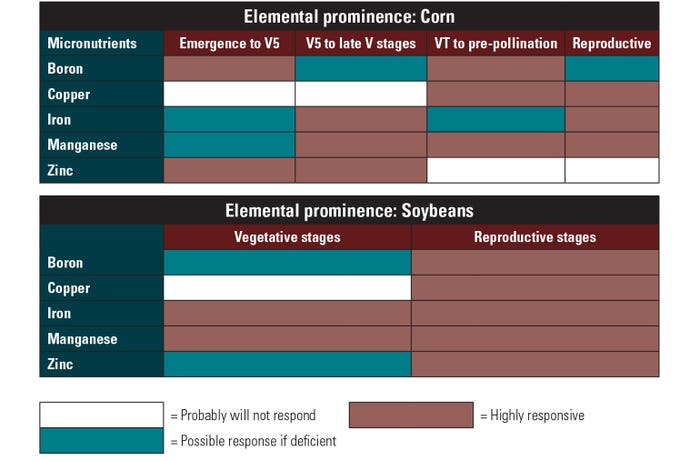
Editor’s note: This is the first in a series of stories about tissue testing. Part 2 covers how to pull tissue samples.
Is tissue testing worth the effort? Does addressing in-season micronutrient needs really boost yield? That’s what Decatur farmer Mat Muirheid wanted to know as he began honing in on potential micronutrient deficiencies in 2016. He soil samples every four years and uses tissue testing to measure in-season nutrient levels.
“Soil sampling and tissue sampling are two totally different things,” he notes. “Tissue sampling gives you a snapshot of what’s in the plant, and a soil sample shows what’s available to the plant. It’s like getting a health report.”
What is tissue testing? “It’s a technique used by soil and plant analysis laboratories to measure the concentration of macronutrients and micronutrients in plant leaves,” says Jason Haegele, an agronomist with WinField United. “When compared to published nutrient ranges for each crop and growth stage, agronomists and farmers can determine if their crop has deficient, optimal or excessive amounts of key macronutrients and micronutrients.”
Tissue sampling takes fertility management to the next level, he adds.
Why isn’t soil sampling enough? Macronutrients and micronutrients in the soil may not make it into the plant. Poor root development and environmental conditions, like excessive rain or drought, can hinder nutrient uptake.
“Maintaining adequate levels of soil nutrients is only the foundation for yield,” Haegele says. “Optimizing fertility includes in-season tissue testing and fertilizer applications at key points throughout plant growth and development.”
Why micronutrients matter
Micronutrients live up to their name. A very small amount of each micronutrient plays a critical role in plant development, Haegele explains, like photosynthesis and root development. (See chart.)

The key to tissue sampling and addressing potential deficiencies starts with understanding when crops tap into each micronutrient. Corn and soybeans use micronutrients at different growth stages, Haegele adds.
Soybeans need boron, copper, iron, manganese, zinc, magnesium, sulfur and calcium during the reproductive stage for flower and pod development. Corn uses zinc much earlier in the growing season for root development.
Tissue sampling ensures the right micronutrients are in the plant tissue at the right time, Haegele explains. (See charts below about elemental prominence.)
Addressing nutrient needs
Muirheid’s 2016 tissue tests showed his soybean crop would respond to more manganese, and he applied 32 ounces per acre of Max-In Ultra ZMB, a combination of zinc, manganese and boron. The last tissue test, taken at the end of the reproductive stage and the beginning of drydown, showed the crop was still short on manganese, he adds. Despite the slight shortage, Muirheid’s ZMB-treated soybeans yielded 3 to 4 bushels per acre more than his nontreated trial planted on the same day with the same variety.
Muirheid plans to tissue test micronutrient levels again this year and add more manganese to the ZMB.
“We’re just trying to learn and test new things to improve our yield and bottom line,” Muirheid notes.
Interested in tissue testing? Check out Part 2: “4 steps to tissue testing.”

Tissue testing aligns with micronutrient demands, explains agronomist Jason Haegele. “Certain elements stand out at different growth stages, based on crop demands,” he explains. “This is referred to as elemental prominence.” When corn or soybeans are short on micronutrients at key stages, they respond to foliar fertilizer applications.
About the Author(s)
You May Also Like




